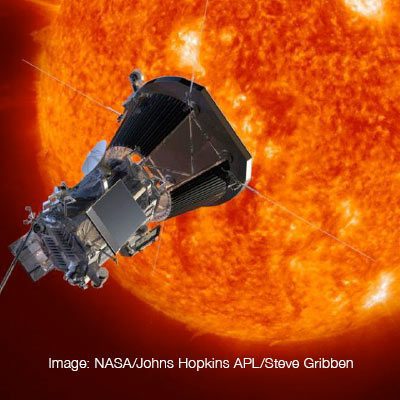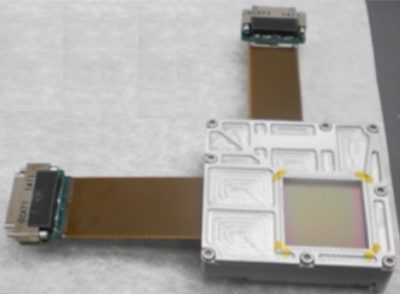Creating imaging solutions that deliver outstanding images even in extreme conditions
CHALLENGE AND GOAL
On August 12, 2018 NASA launched their Parker Solar Probe. The spacecraft is designed to probe and make observations of the outer corona of the sun. In order to capture accurate images of the sun’s atmosphere, and coronal mass ejections (CMEs), NASA required a new type of imager that offered higher performance than CCD-based imaging solutions.
SOLUTION AND OUTCOME
SRI International researchers developed Active Pixel CMOS detectors for the U.S. Naval Research Laboratory’s Wide-Field Imager for Solar Probe (WISPR). This is the only imaging instrument aboard the Parker Solar Probe.

When NASA set their sights on the Sun, they didn’t just want to gather pictures from a distance. They wanted to “touch” the star. To do this, the agency developed the Parker Solar Probe. After its launch on August 12, 2018, the Parker Solar Probe raised the bar on space exploration by heading closer to the sun than any manmade object.
The Parker Solar Probe contains four instrument suites to characterize the dynamic region that is close to the sun. One of those core components is the U.S. Naval Research Laboratory’s Wide-Field Imager for Solar Probe (WISPR). As the only imaging device on the space probe, WISPR had to meet extensive performance and durability requirements that were beyond what existing CCD-based imaging solutions delivered.
To overcome this challenge, the U.S. Naval Research Laboratory worked with researchers at SRI to develop a new type of space-qualified CMOS sensors. The SRI Active Pixel CMOS detectors — which are one of the first CMOS sensors to be used in space — are 2k x 2k radiation-hardened sensors that are integrated into focal-plane arrays (FPAs) within the two coronagraph telescopes on the Parker Solar Probe.

In addition to featuring larger pixels that enable higher quality image captures, the SRI Active Pixel CMOS detectors consume less power than legacy CCD devices, while still being able to handle the extreme radiation environment of space.
The SRI imager used in the Parker Solar Probe set the foundation for future iterations of SRI designed imagers for space that are being developed for a variety of other applications such as the CCOR missions.



